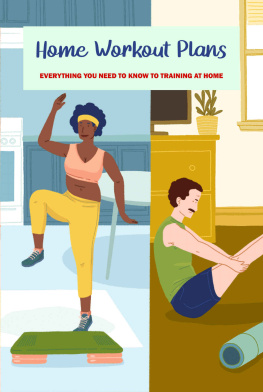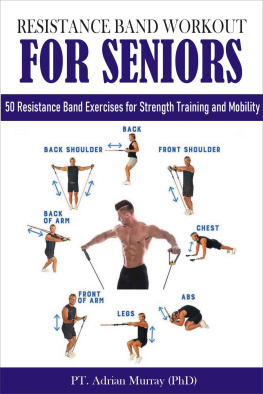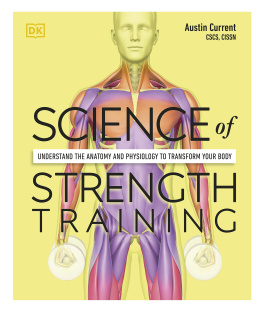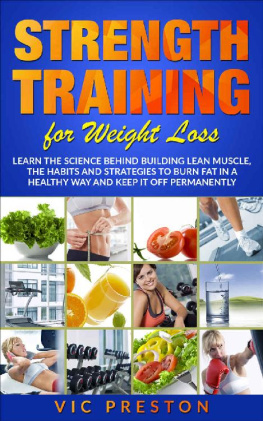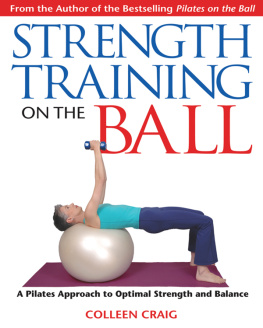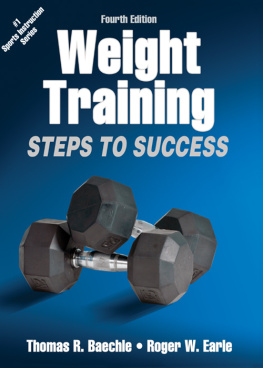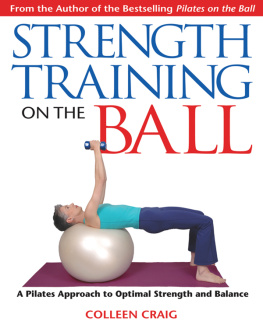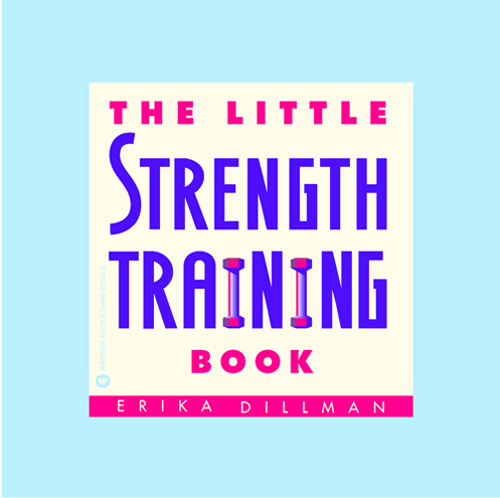Neither these exercises and programs nor any other exercise program should be followed without first consulting a health care professional. If you have any special conditions requiring attention, you should consult with your health care professional regularly regarding possible modifications of the program contained in this book.
Copyright 2004 by Erika Dillman
All rights reserved.
Hachette Book Group
237 Park Avenue, New York, NY 10017
Visit our website at www.HachetteBookGroup.com.
The Little Strength Training Book is part of the Little Book series owned by Warner Books. All rights to the series and the trade dress is the property of Warner Books, Inc.
ISBN: 978-0-446-56145-7
ALSO AVAILABLE FROM ERIKA DILLMAN AND WARNER BOOKS:
The Little Abs Workout Book
The Little Book of Healthy Teas
The Little Pilates Book
The Little Soy Book
The Little Foot Care Book
The Little Yoga Book
For Maddie
Thanks to the many people who contributed to The Little Strength Training Book:
My agent, Anne Depue; my editor, Diana Baroni, and assistant editor, Molly Chehak; and my friends and family for their continued support.
Emma Vokurka, for her wonderful illustrations.
Debby Heath, Stephanie Molliconi, Janet Clark, Ted Johnson, Suzan Huney, Jill Irwin, Anita McEntyre, and Seanna Brow for their helpful comments, suggestions, and proofreading.
And the many health and fitness experts who generously shared their time and expertise with me: William J. Kraemer, professor of exercise physiology, University of Connecticut; Wayne Wescott, Ph.D., fitness research director at the South Shore YMCA, Quincy, Massachusetts; Darcy Norman, physical therapist, certified athletic trainer, certified strength and conditioning specialist (CSCS); Michael Porter, M.S., health and fitness instructor (certified by the American College of Sports Medicine), CSCS; and C.C. Cunningham, M.S. certified athletic trainer, CSCS, and personal trainer (certified by the American Council on Exercise).
A NEW LOOK AT STRENGTH TRAINING
S trength training is a lot like eating more vegetables: its good for you, but perhaps you havent quite gotten into the habit yet. Maybe you think itll take too much time, or you dont want to join a gym, or youre afraid that youll end up looking like the Incredible Hulk.
On the other hand, wouldnt it be nice to be able to lift those economy-size bottles of laundry detergent without hurting yourself? And have more energynot to mention, lose a few pounds, firm up the flab under your upper arms, and lower your blood pressure, all while increasing your stamina?
If you like the idea of having a stronger, healthier body, dont let a few misconceptions stand in your way. Strength training doesnt require a big time commitment; it can be done safely at home by people of all ages and abilities, and it will give you a stronger, firmer body without bulking you up. Fitness professionals recommend it as an essential component of a balanced fitness plan, along with aerobic and flexibility exercises.
HOW TO USE THIS BOOK
Before practicing any of the exercises in this book, please read the preceding chapters to become more familiar with basic anatomy and physiology, body mechanics, strength training guidelines, and training techniques and tips. You will learn the importance of progressing gradually, mastering basic moves before taking on more challenging exercises. Learning the how tos and whys of strength training before practicing any of the exercises will help you get the most out of your workouts.
Whether youre a beginner or a frequent exerciser, youll find this book easy to use. All of the exercises are described in step-by-step, easy-to-follow instructions, with no confusing sports jargon or hype.
I hope that in reading The Little Strength Training Book you not only learn how to master the exercises but also enjoy practicing them. With a small time commitment and consistent training, you will soon benefit from more energy and a stronger, leaner body.
ERIKA DILLMAN
WATER WEIGHT
I havent exactly had sand kicked in my face, but I have experienced the independent womans equivalent: having to ask my boyfriend to replace the five-gallon water jugs on my water dispenser.
For years, we had a perfect system. I wanted a drink; he did the heavy lifting. But when things got shaky between us, I was forced to take responsibility for my bottled water habit. First, I tried three-gallon jugs, but they were still too heavy for me to carry up to my second-floor apartment. Then, for a while, I bought liter-size bottles of water. That didnt work either (too many trips to the store). Finally, faced with the prospect of having to drink tap water for the rest of my life, I decided to do something about my matchstick arms and rubbery torso.
CHANGING PERCEPTIONS
Its not like strength training was a mystery to me. Id lifted weights in high school to prepare for the track season, although I rarely stuck with it once the season ended. Knowing I was in excellent cardiovascular shape from all the miles I logged, I had occasionally wondered whether lifting weights did anything for me but fatigue my already overworked muscles.
Even in my mid-twenties, when illness and injury prevented me from running, I still didnt consider lifting weights as a necessary part of my fitness routine. I wasnt in training for competition, my heart and lungs were in good shape, and I burned a lot of calories from swimming, walking, and biking. There were strong people and weak people, and I accepted that I was skinny and weak and always would be. I liked being thin. It worked for me. That is, until I hit my thirties and realized that I no longer had the body of an active sixteen-year-old.
Ten pounds overweight and lumpy in places I wanted to be firm, it wasnt only my struggles with oversize water jugs that caused me to take a fresh look at getting stronger. It had begun to seem like everyone was in shape but me. Sure, I wanted to lift my own bottles and carry my own suitcase. But I also wanted to look great in a little black dress.
STRENGTH, ENERGY, AND GRACE
I started working with a personal trainer at my health club who designed a few different strength training routines for me, each consisting of six or seven exercises to train all of the major muscle groups in my body. I started off with twice-a-week, twenty-to-thirty-minute workouts that I could do at home with no equipment or with handheld weights.
Initially, I worked with very light weightsonly three- and five- pounders. Approaching each exercise like a yoga pose, I concentrated on using correct form, maintaining my posture, and coordinating my movement with my breath. Before each lift I inhaled slowly, focusing my mind on the task ahead, and as I lifted the weight, I exhaled slowly, controlling the pace with my breath. Then, inhaling slowly, I returned the weight to the starting position. I was surprised by how much I enjoyed the discipline and control required in strength training. It felt good to develop a rhythm that made me feel graceful and strong at the same time. My workouts left me feeling solid and energized, like Id accomplished something important. Over time, I was able to gradually increase the amount of weight I lifted.
INDEPENDENCE RESTORED
Within a few months, my arms and legs felt firmer and had more muscle definition. Even my abs felt harder when I pressed on them. My trainer had assured me that I wouldnt bulk up from strength training, but rather firm up. She was right. I felt better, I looked better, and I started to notice other changes in my body. My coordination and balance improved. And I could walk farther before becoming fatigued.



